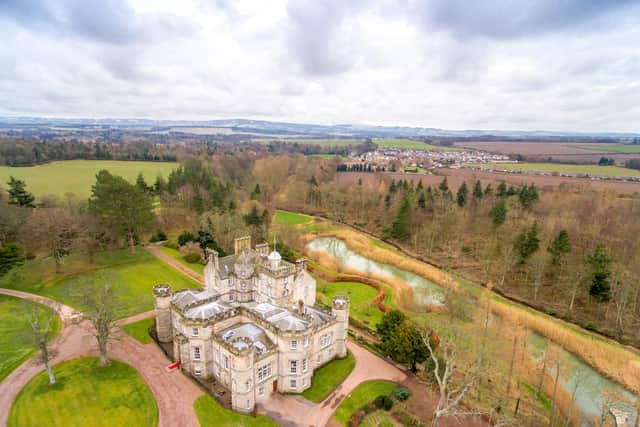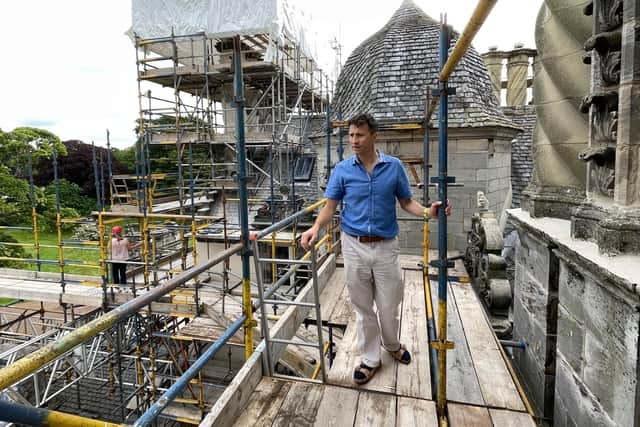East Lothian Baronet reveals the downside of owning a castle
Sir Francis Ogilvy, of Winton Castle by Pencaitland near Edinburgh, has just finished restoring the original castle and later Renaissance palace after the pandemic closed it for events.
Winton, originally built by the powerful Seton family, has links to both Henry VIII – whose forces burned down the castle during the Rough Wooing - and the Jacobites.
Advertisement
Hide AdAdvertisement
Hide AdNow, in preparation for the future, the castle’s elaborate, twisted chimneys have been restored, the harling replaced and a number of improvements made.


Sir Francis, the 14th Baronet of Inverquharity, said: "There’s a reason nobody’s building castles anymore. Think about them – all turrets and ramparts – even esplanades for your army.
"Now a battery is to connect your solar panels to, a flagpole for a turbine and a moat for ground source heating.”
Sir Francis, who inherited the castle from his father, said history had helped create worldwide interest in places like Winton, with the castle’s use as an events venue offering people “something altogether different from the norm”.
But, he added: “Even so – this does not diminish the fact that you have to be brave or bonkers to want to own a castle. Silver linings are worth looking out for.


"A venture in hospitality at Winton took a long time to come good, only for a virus to pull that rug from beneath us overnight.
"Instead, once we found our feet a bit, we embarked on a facelift for our 15th century castle and 17th century palace, not possible in normal times.”
The Seton family lost the castle following the 1715 rebellion with the grounds later requistioned by Bonnie Prince Charlie during the 1745 rising. Its vast estate once covered land which is now Muirfield Golf Club.


Advertisement
Hide AdAdvertisement
Hide AdThe restoration team were prepared for the “unexpected” given parts of the building pre-date Mary Queen of Scots, but challenges lurked everywhere given its scale.
As 50mph winds swept in and battered scaffolding, cement harling was replaced with a sympathetic render so the stone didn’t need to be pulled apart.
"That is important when dealing with hunks of ornately carved stone 20 metres up in the air,” he added.
Around 70 tonnes of lime render were used during the restoration with walls now “singing out like new”, although every piece of replacement stone took on average of 30 hours to carve.
Sir Francis added: “Carving in reverse mode to the original, seeking to envision multi-dimensions and four hundred years of weathering, means you need a tradesman to match the original kings’ master mason in skill as well as a large swear box.”
Another major job was the reinstatement of a lead and stone rainwater hopper.
Sir Francis said: “Given that it was 400-years-old years old and above the entrance where there were the king’s and owners’ coats of arms are displayed, this was not a hopper from Wickes.”
Sir Francis, who lives at Winton with his wife Dorothy and their four children, owns Ogilvy Chalmers chartered surveyors, estate agents and architects in Haddington.
Advertisement
Hide AdAdvertisement
Hide AdOf the restoration he said: "Nothing’s done in a jiffy on this job, but the end result is a wonder to behold.”
A message from the Editor:Thank you for reading this article. We're more reliant on your support than ever as the shift in consumer habits brought about by Coronavirus impacts our advertisers.
If you haven't already, please consider supporting our trusted, fact-checked journalism by taking out a digital subscription.
Comments
Want to join the conversation? Please or to comment on this article.